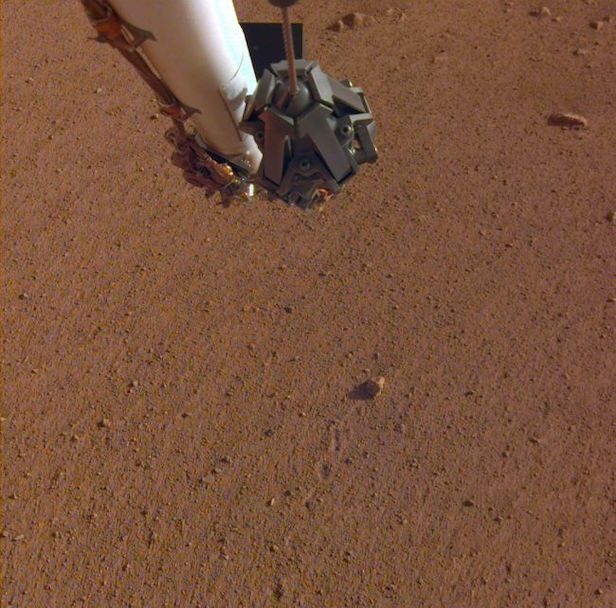NASA names record setting Mars rock after The Rolling Stones
Robert Downey Jr. made the announcement at a Stones concert on 22 August 2019
The Rolling Stones just got an otherworldly tribute.
The team behind NASA’s InSight Mars lander has named a particularly peripatetic Red Planet rock after the legendary band.
The moniker “Rolling Stones Rock” was announced 22 August 2019 by actor Robert Downey Jr. at the Rose Bowl in Pasadena, California, United States – the home city of NASA’s Jet Propulsion Laboratory (JPL), which manages InSight’s mission – just before the Stones took the stage. The unveiling came after hours of anticipation after a cryptic video Downey Jr. posted on Twitter.
“What a wonderful way to celebrate the ‘Stones No Filter’ tour arriving in Pasadena,” the band said in a JPL statement. “This is definitely a milestone in our long and eventful history. A huge thank you to everyone at NASA for making it happen.”
Rolling Stones Rock, which is a bit bigger than a golf ball, was disturbed by InSight’s thrusters during the lander’s touchdown on 26 November 2018, NASA officials said. The stone rolled about one meter (three feet) as a result.

The rock in the centre of this image was tossed about one metre (three feet) by NASA’s InSight spacecraft as it touched down on Mars on 26 November 2018. The rock, which is a little bigger than a golf ball, was later nicknamed “Rolling Stones Rock” in honour of The Rolling Stones. Image credit: NASA/JPL-Caltech
“In images taken by InSight the next day, several divots in the orange-red soil can be seen trailing Rolling Stones Rock,” NASA officials wrote in the JPL statement. “It’s the farthest NASA has seen a rock roll while landing a spacecraft on another planet.”
The new name is an informal one; it has not been approved by the International Astronomical Union, the body that designates “official” monikers for cosmic objects and their features. But Rolling Stones Rock will appear on working Mars maps used by scientists, NASA officials said. (Team members on Mars surface missions have a long history of nicknaming stones, outcrops and other features to make discussion of scientific results easier.)
“I’ve seen a lot of Mars rocks over my career,” said InSight team member Matt Golombek, who has worked on every NASA Mars surface mission since 1997. “This one probably won’t be in a lot of scientific papers, but it’s definitely one of the coolest.”
InSight, whose full name is “Interior Exploration using Seismic Investigations, Geodesy and Heat Transport,” is tasked with mapping the Martian interior in unprecedented detail. The lander is equipped with a suite of incredibly sensitive seismometers, which the mission team uses to detect and characterise marsquakes.
InSight also features a burrowing heat probe dubbed “the mole,” which was supposed to bury itself at least three metres (10 feet) underground. But the mole hit a snag before reaching its intended depth, and mission team members are still trying to diagnose and fix the issue.
Keep up to date with the latest news in All About Space – available every month for just £4.99. Alternatively you can subscribe here for a fraction of the price!




